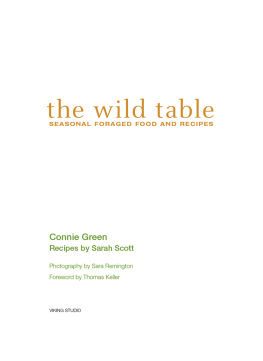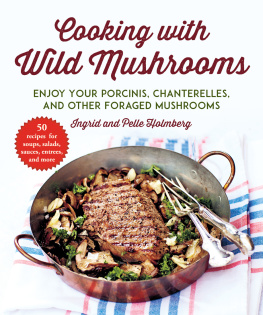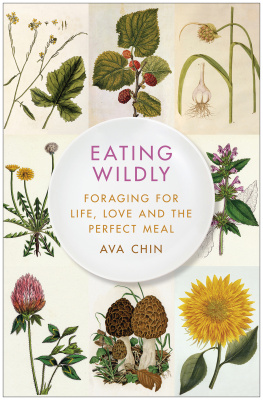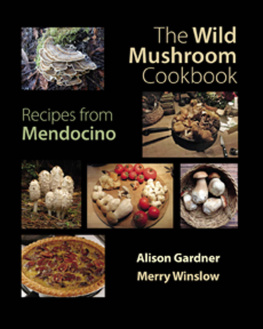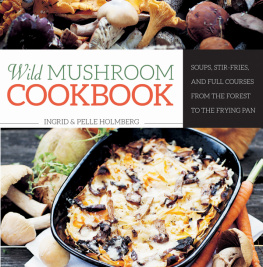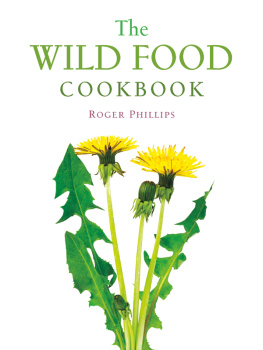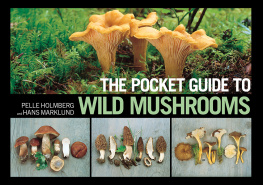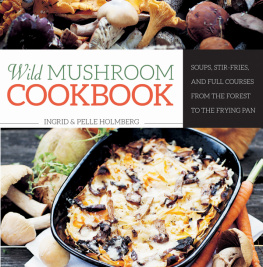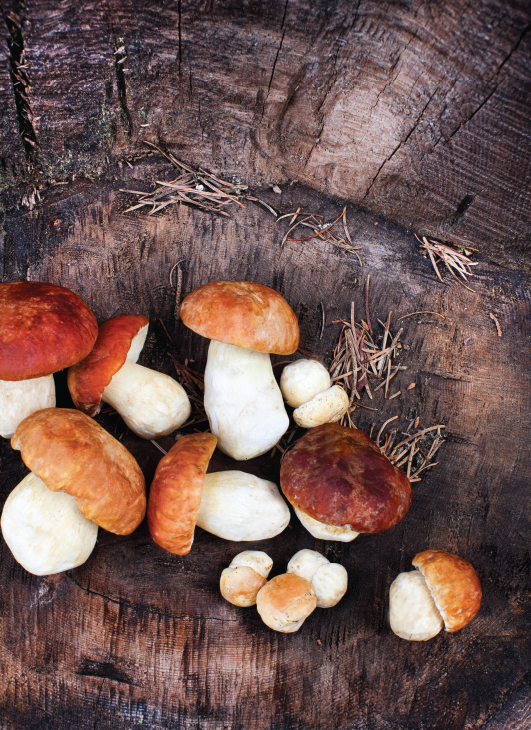Black trumpet mushroom
VIKING STUDIO
Published by the Penguin Group
Penguin Group (USA) Inc., 375 Hudson Street, New York, New York 10014, U.S.A.
Penguin Group (Canada), 90 Eglinton Avenue East, Suite 700, Toronto, Ontario, Canada M4P 2Y3 (a division of Pearson Penguin Canada Inc.)
Penguin Books Ltd, 80 Strand, London WC2R 0RL, England
Penguin Ireland, 25 St. Stephens Green, Dublin 2, Ireland (a division of Penguin Books Ltd)w
Penguin Books Australia Ltd, 250 Camberwell Road, Camberwell, Victoria 3124, Australia (a division of Pearson Australia Group Pty Ltd)
Penguin Books India Pvt Ltd, 11 Community Centre, Panchsheel Park, New Delhi 110 017, India
Penguin Group (NZ), 67 Apollo Drive, Rosedale, North Shore 0632, New Zealand (a division of Pearson New Zealand Ltd)
Penguin Books (South Africa) (Pty) Ltd, 24 Sturdee Avenue, Rosebank, Johannesburg 2196, South Africa
Penguin Books Ltd, Registered Offices: 80 Strand, London WC2R 0RL, England
First published in 2010 by Viking Studio, a member of Penguin Group (USA) Inc.
Copyright Connie Green and Sarah Scott, 2010
Photographs copyright Sara Remington, 2010
All rights reserved
Prop stylist: Ethel Brennan
Food stylist: Erin Quon
Food stylist assistant: Victoria Wollard
Camera assistant: Stacy Ventura
Publishers Note
It is important to use caution when gathering and preparing wild edibles. Use reliable guidebooks and/or consult with a professional before partaking of any unfamiliar wild ingredients. The recipes contained in this book are to be followed exactly as written. The publisher is not responsible for your specific health or allergy needs that may require medical supervision. The publisher is not responsible for any adverse reactions to the recipes or ingredients contained in this book. Anyone participating in the activities that this book discusses or suggests assumes responsibility for his or her own actions and safety. The information contained in this book cannot replace professional advice, or sound judgment and good decision making.
ISBN 978-1-101-66509-1
Without limiting the rights under copyright reserved above, no part of this publication may be reproduced, stored in or introduced into a retrieval system, or transmitted, in any form or by any means (electronic, mechanical, photocopying, recording or otherwise), without the prior written permission of both the copyright owner and the above publisher of this book.
The scanning, uploading, and distribution of this book via the Internet or via any other means without the permission of the publisher is illegal and punishable by law. Please purchase only authorized electronic editions and do not participate in or encourage electronic piracy of copyrightable materials. Your support of the authors rights is appreciated.
Version_1
For my ancestors, whose communion with nature was no abstraction but a reality planted deep in their heart and gut. | CONNIE GREEN
For Ben Pattersona wild and beautiful soul. | SARAH SCOTT
Foreword
As a child in the 1950s, I had my first encounter with mushrooms through a can. I have vivid memories of my mothers using Campbells cream of mushroom soup whenever she cooked her beef stroganoff. While it was a humble and simple recipe, it remains one of my most beloved childhood memories and a favorite dish to this day. Later, working as a young chef in Rhode Island, I started adding dried mushrooms to my repertoire. But it was during my apprenticeship in France that I was exposed to their fresh counterparts and became skilled in their preparation. Morels, chanterelles, cpes, the prized black truffles of Prigord, and the white truffles of Alba were some of the incredible varieties that I learned to cook well and appreciate. Mushrooms have an earthy quality that tends to add flavor, dimension, and a sense of luxury to almost any ingredient with which they are paired.
Opening the French Laundry in 1994 was the realization of a lifelong dream, and Connie was one of our very first purveyors at the restaurant. The quality of her mushrooms was so exceptional that she quickly earned the nickname the Mushroom Lady. But while mushrooms were what she was known for, she has also brought in other outstanding wild foods for us to discover and enjoy, such as ramps, huckleberries, and sea beans. My philosophy is simple: to use the very best ingredients available in order to establish a memorable dining experience for our guests. Though they might never meet Connie face-to-face, her contributions help us with our success as a restaurant each and every day. She is an integral part of the process.
Connie continues to live up to her nickname by providing us with a wonderful array of mushrooms that are often the highlight of our menus at the French Laundry. They represent a simple, fundamental ingredient that, with the application of skill and patience, is capable of elevating any dish in which they are introduced. The mushrooms that she and her foragers discover throughout the year help us mark the passage of the seasonsfrom the first delicate morels of spring to the rich, luxurious porcinis of winter. As she steps into our kitchen to make a delivery, basket of mushrooms in hand, our chefs eagerly await to glimpse what new treasures they have unearthed for us that day. It is a ritual we look forward to each and every time.
Thomas Keller, The French Laundry
Introduction
The call of wild foods was a gentle murmur when I first started gathering food. It was the sound of my grandmothers voice as we dug sassafras and picked scuppernong grapes. Delights like poke salad and mayhaws werent just funny words in old country songs; they were hunted, put on the table, and eaten with great relish.
As the years passed, wild food retreated to the fringes of public interest, but it never lost its hold on me. I was probably standing at the low-tide mark in the late seventies, when I visited numerous San Francisco restaurants trying to sell my baskets of wild mushrooms. I found only two chefs whod ever seen a chanterelle beforeand both were French. One refused even to believe my mushrooms were chanterelles because they do not grow in this country. The other chef recognized the fresh chanterelles but thought they were far too large. He informed me that the ones he was using from a tin can were superior because they were small and French. These were the two best-known chefs in San Franciscos two finest restaurants. Five years later, both restaurants doors were closed and in had swept the dawn of fresh, local, seasonal California cuisine.
Now, more than three decades later, I find myself sitting squarely at the curious crossroads of the Stone Age and haute cuisine. I cant count the times over the years Ive crawled out of the woods quite oblivious to the leaves and twigs in my hair and marched directly to a chef in a crisp white uniform. Thirty years ago the late, great chef Masataka was thrilled to parade me and my chanterelles past diners whose private jets were parked just a few miles from the woods I hunted. One minute Im worried about how we can get our mushrooms across a raging creek and eight hours later Im putting the fresh cpes into the hands of a delighted sous-chef at the French Laundry.

